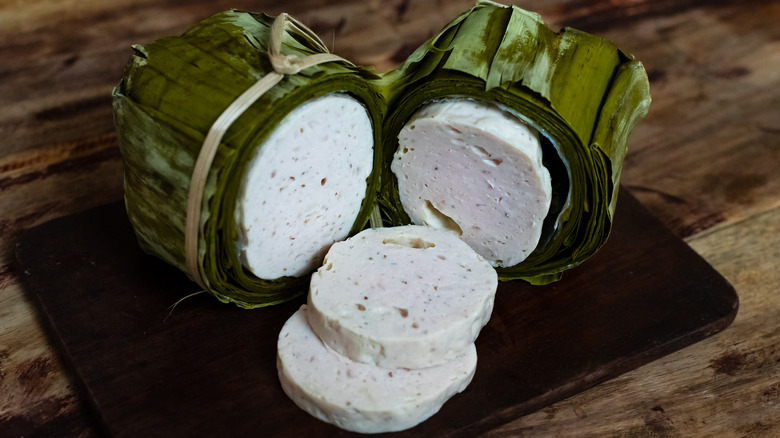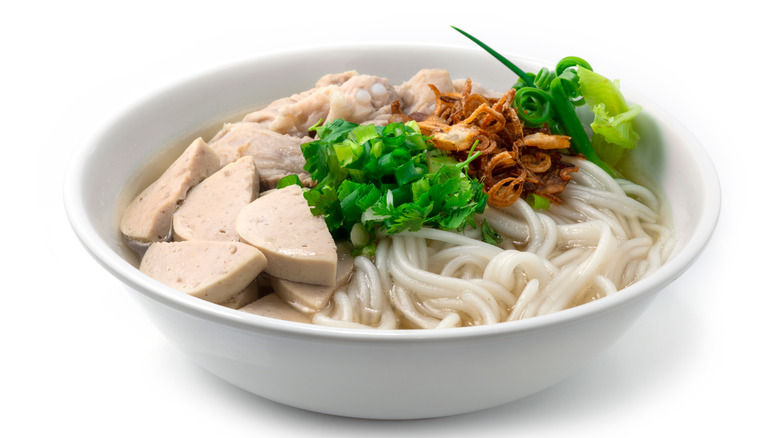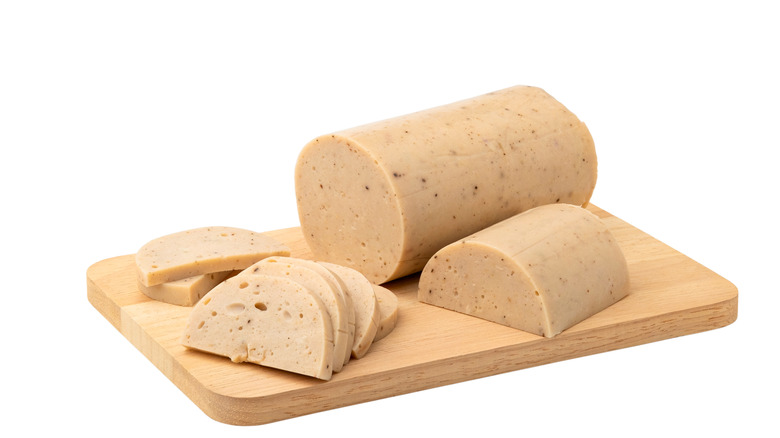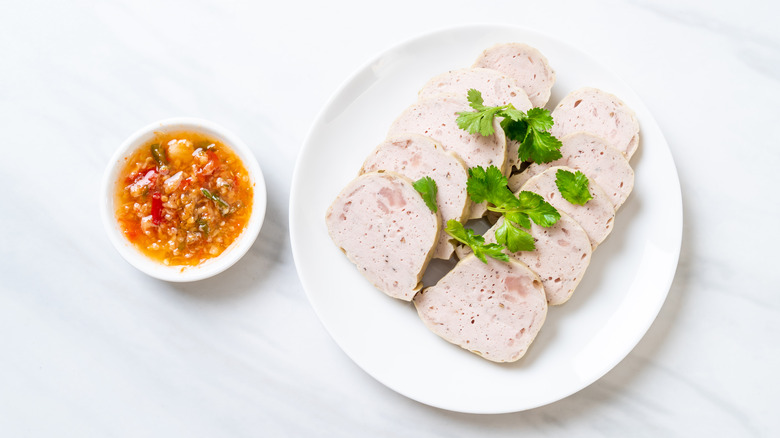Vietnam's Pork Chả Lụa Sausage Has 19th Century Roots
Every cuisine has its staples — like tortillas in Mexico, potatoes in Russia, or sambal in Malaysia. While now ubiquitous, these foods haven't always been an essential component of their region. Created through the Columbian exchange or other cultural intermingling, cuisine is an ever-evolving concept. In Vietnam, it's the relics of French colonialism that fused into modern-day gastronomy. From the baguette in a banh mi to the carrots, potatoes, and asparagus vegetables consumed in the country, the influences are extensive, notes Culture Trip.
Such a French influence also intertwines with chả lụa sausage, a lean pork ham popular across the entire country. Made with only a few ingredients, the food is accessible yet takes special attention to craft. Found on Tết, or Vietnamese New Year's dining tables in all regions, this sausage is both celebrated and eaten as an everyday staple, explains Vietnam.com. So let's dive into chả lụa sausage — this ordinary meat is something extraordinary.
What is chả lụa?
Chả, alternatively known as giò in Northern provinces, is Vietnamese for sausage. The most popular type is chả lụa, a rendition of tubed meat with pork. Flavored with fish sauce and garlic, the sausage's soft texture is held together with starch. To start, lean pork is pounded until in a dense paste, which is then wrapped in banana leaf and steamed. The result, esteemed for its protein content, is topped onto noodles, and soups, and is an especially popular ingredient in banh mi, explains Vietnamenu.
Owing its origins to French colonization during the 19th century, the dish combines European-influenced sausage-making methods with Vietnamese ingredients. The texture of the meat is especially important, with the wrong pulverization method resulting in an unpalatable sausage. Additionally, the paste must be tightly sealed when steamed. Vietnamese immigrants to the U.S. replace hard-to-find banana leaves with aluminum foil to ensure a proper texture, notes Lion Brand.
How to make chả lụa
In Vietnam, the sausage is rarely made at home — instead purchased from vendors. The meat is traditionally pounded in a mortar and pestle by hand for several hours, although food processors are now substituted instead. For a taste most faithful to how it's done in Vietnam, marinate thinly sliced pork in fish sauce, then freeze for two hours. Combine the result in a food processor with more fish sauce, then add tapioca starch before rolling it out into banana leaves, notes Cuisine of Vietnam.
For a quick at-home version, opt for lean pork for textural ease. Add the meat to a stand mixer, and start the machine to soften the pork. Combine flavorings, like fish sauce, white pepper, garlic, sesame oil, and starch to thicken. Add the ingredients to the mixer, and beat until strands appear. After separating the pork into two long rolls, wrap them in a banana leaf, and tie them with twine. Boil for 45 minutes or steam for an hour, explains Sift and Simmer.
How to store and use chả lụa
Homemade chả lụa will last for around a week at room temperature, but it's better to store it in the fridge. Premade rolls will last longer, especially if unopened — up to three or four weeks in the freezer. Well-known brands can be found in Asian groceries, particularly those with a Vietnamese specialization. Seek out rolls wrapped in banana leaves for the best flavor, and don't forget to check the label for ingredients — some are spicy, or contain undesired additives, notes Cooking with Lane.
After procuring chả lụa, slice the ham and easily integrate it as a topping. In addition to the popular banh mi, the sausage goes well with rice rolls, banh cuon, sticky rice cakes banh day, and bun bon hue, a meaty soup similar to pho. It can even make a meal on its own when fried, and served with rice and a chili dipping sauce, notes The Ravenous Couple. The sausage's versatility and taste highlight why chả lụa became a staple of Vietnamese cuisine. Dependable and nutritious, it makes for an easily-integrated delight.



